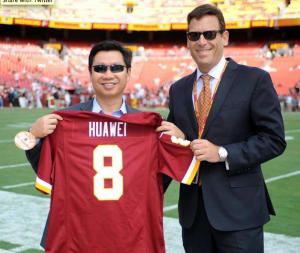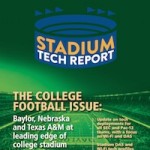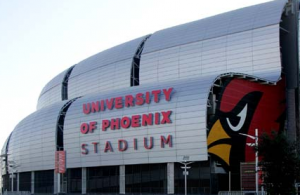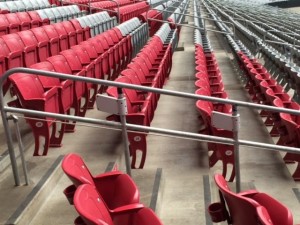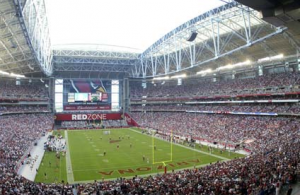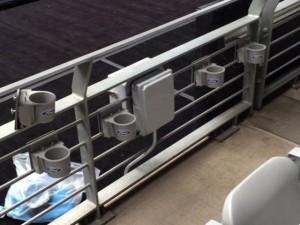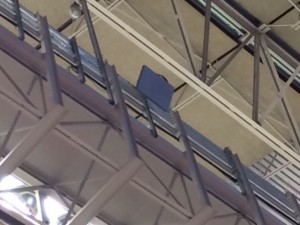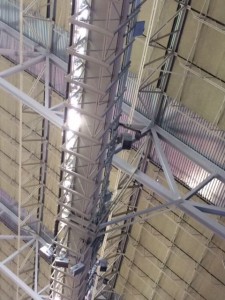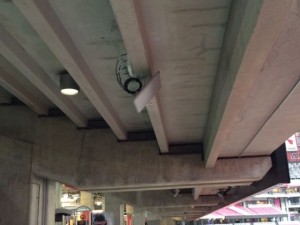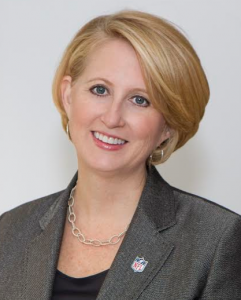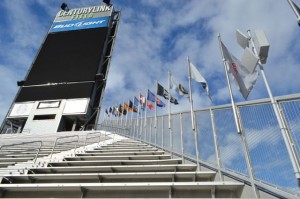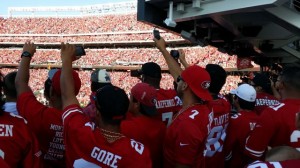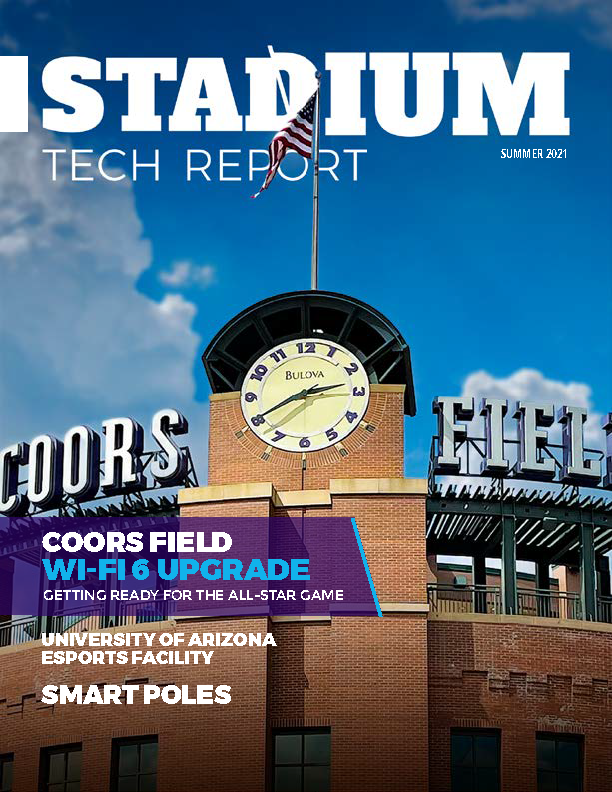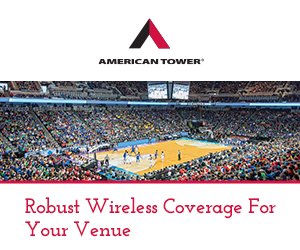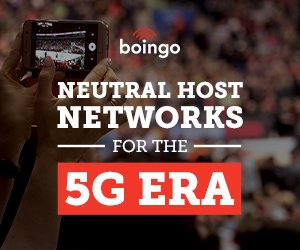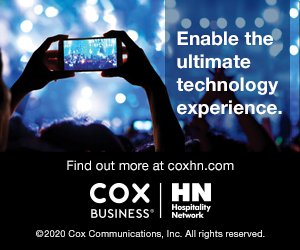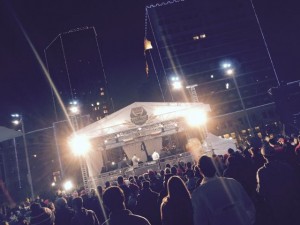
ESPN’s College Football Playoff Championships stage in downtown Fort Worth, Sunday night. Credit: Paul Kapustka, MSR
We’re here to see a test of AT&T’s LTE broadcast technology, which will ostensibly make it easier for venues to deliver live video streams via a cellular connection. But we also are going to take advantage of the event to walk around “Jerry’s World” and take speed tests and see how the network at AT&T Stadium performs for a big game. If you are in attendence and know how to do a Wi-Fi or cellular speed test, send us the results (tweet at @paulkaps is the best way, or send me email to kaps at mobilesportsreport.com). Check Twitter for updates during the game.
